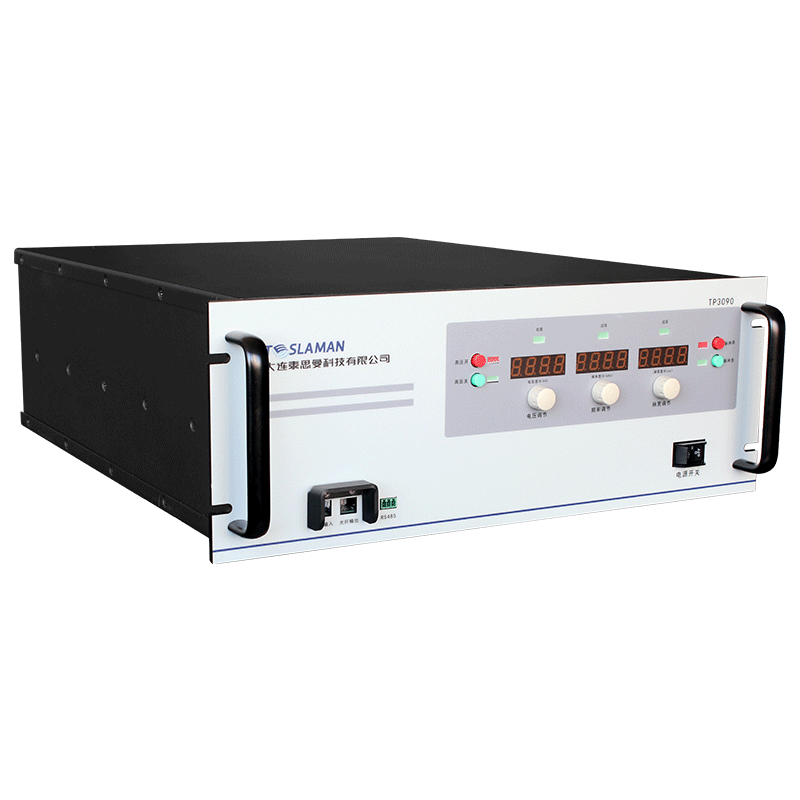Performance Optimization of High-Voltage Power Supplies for Mass Spectrometers
In the field of modern analytical science, mass spectrometers, with their high sensitivity and resolution, have become core instruments for substance composition analysis and structural identification. The key processes in mass spectrometers, such as ion acceleration, deflection, and detection, all rely on high-voltage power supplies to provide precisely controlled electric fields. Therefore, optimizing the performance of high-voltage power supplies is crucial for enhancing the overall performance of mass spectrometers, and the core optimization directions can be explored from the following aspects.
1. Ultra-high Stability Voltage Output
Mass spectrometers have extremely stringent requirements for the voltage stability of high-voltage power supplies. In time-of-flight mass spectrometry (TOF-MS), the accurate calculation of ion flight time directly depends on the stability of the acceleration voltage. Even minimal voltage fluctuations can lead to significant errors in mass measurements. To achieve ultra-high stability, high-voltage power supplies adopt a combination of digital phase-locked loop (PLL) technology and high-precision voltage reference chips. The PLL technology continuously monitors the phase difference between the output voltage and the reference signal, and adjusts it through feedback control to keep the voltage fluctuation within ±0.01%, meeting the sub-ppm stability requirements of high-end mass spectrometers. Additionally, the application of new wide-bandgap semiconductor devices, such as silicon carbide MOSFETs, reduces the on-state losses and temperature drift of power devices, further improving the long-term stability of voltage output.
2. Extremely Low Ripple and Noise Suppression
Power supply ripple and noise are significant factors affecting the detection limit and resolution of mass spectrometers. When ions move in an electric field, the additional electric field generated by the ripple can cause ion trajectory deviations, leading to the broadening of mass spectral peaks. To effectively suppress ripple, high-voltage power supplies employ multi-stage LC filter networks and active noise cancellation techniques. By optimizing the filter parameters, the high-frequency ripple generated by the switching power supply can be reduced from several hundred mV to below 10 μV. Meanwhile, the adaptive noise cancellation algorithm is used to compensate for internal and external electromagnetic interference (EMI) in real-time, reducing the total harmonic distortion (THD) of the output voltage to less than 0.001%. Such extremely low ripple and noise levels ensure the high sensitivity and accuracy of mass spectrometers in trace substance detection.
3. Fast Dynamic Response Characteristics
In applications like tandem mass spectrometry (MS/MS) that require rapid voltage switching, the dynamic response speed of high-voltage power supplies directly impacts the analysis efficiency and data quality. To achieve fast response, high-voltage power supplies adopt a hybrid control strategy combining feedforward control and feedback control. The feedforward control pre-calculates the required voltage adjustment for load changes, enabling the power supply to respond quickly to sudden load variations. The feedback control, on the other hand, corrects deviations in real-time to ensure voltage stability. Experimental data shows that this scheme allows the power supply to complete voltage switching within 10 μs with an overshoot of less than 0.1%, meeting the demand for rapid voltage switching in complex mass spectrometry experiments.
4. Intelligent Monitoring and Fault Diagnosis
Modern high-voltage power supplies for mass spectrometers are integrated with intelligent monitoring and fault diagnosis functions. High-precision sensors are built in to collect parameters such as voltage, current, and temperature in real-time, and machine learning algorithms are used to analyze and predict the operating status of the power supply. When abnormal parameters are detected, such as excessive voltage deviation or device overheating, the system automatically triggers protection mechanisms and locates the fault point through fault tree analysis, providing accurate guidance for equipment maintenance. Moreover, the power supply supports remote monitoring and parameter configuration, enabling users to flexibly adjust the output characteristics according to different experimental requirements.
The optimization of high-voltage power supply performance is crucial for enhancing the accuracy, sensitivity, and reliability of mass spectrometry analysis. Through technological innovations in stability, ripple suppression, dynamic response, and intelligence, high-voltage power supplies not only meet the requirements of existing mass spectrometry technologies but also lay a solid foundation for the development of mass spectrometers towards higher resolution and faster analysis speeds. With the continuous advancement of analytical science research, the performance optimization of high-voltage power supplies will remain an important driving force for the continuous progress of mass spectrometry technology.




















